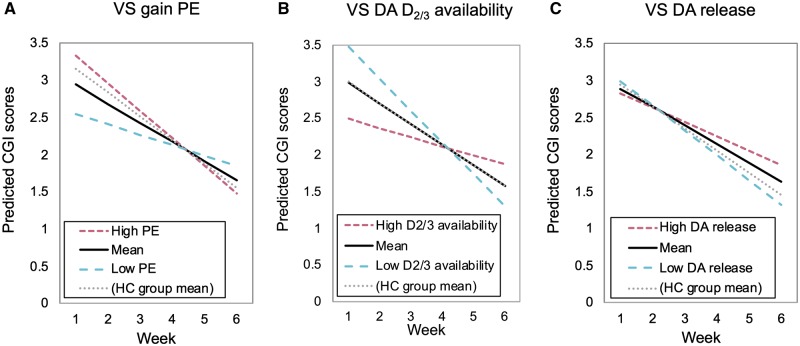Figure 3.
Predictors of change in global illness severity across the 6 weeks of treatment. Figures show the moderating effect of baseline ventral striatal gain prediction error (A), ventral striatal dopamine D2/3 receptor availability (B) and the trend-level moderating effect of ventral striatal dopamine release (C) on the rate of global clinical improvement on the CGI across the 6 weeks of treatment. For visualization purposes, scores for values at the mean, 1 SD above the mean (‘High’), and 1 SD below the mean (‘Low’) are plotted. Scores for values equal to the healthy control group mean are also shown. Higher baseline gain prediction error signals, lower dopamine D2/3 receptor availability and lower dopamine release, predicted greater global clinical improvement. For the models involving the gain prediction error signal (A) and dopamine release (C) as predictors, patients with scores more similar to the healthy control group mean (i.e. those with relatively more normative scores), were those showing the greatest clinical improvement over the course of treatment. For the model involving ventral striatal dopamine D2/3 receptor availability as the predictor (B), the MDD group mean was equal to and overlapped with the healthy control group mean. DA = dopamine; HC = healthy control; PE = prediction error; VS = ventral striatal.

